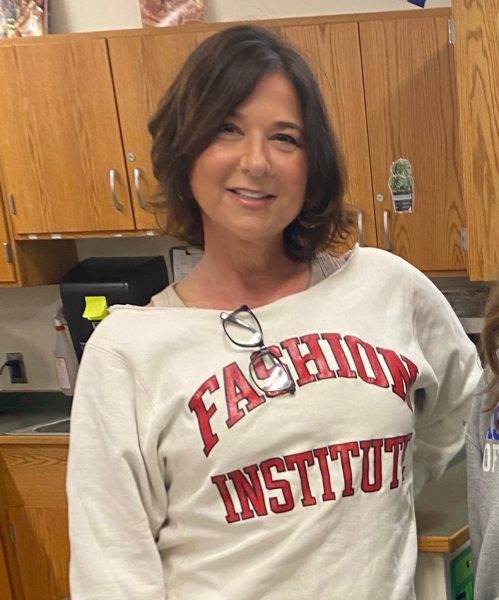Celebrating Eid Al-Fitr
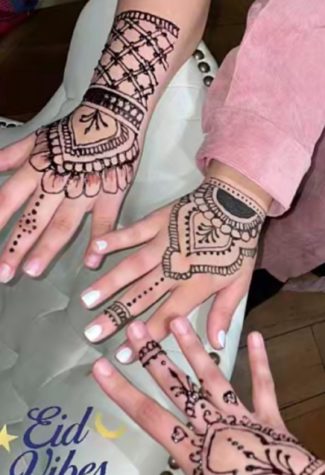
Eid Al-Fitr is a Muslim holiday that marks the end of Ramadan. Ramadan is the holiest month for Muslims and is observed as a month of fasting, prayer, reflection, and community; it is regarded as one of the Five Pillars of Islam. During Ramadan, Muslims fast from sunrise to sunset, meaning they will not eat or drink until sunset each day. Muslims do this for multiple reasons, but mainly to be closer to God. Another reason Muslims fast is to cleanse the soul and to have self-discipline. In the Quran (Muslims’ holy book) it says, “Fasting is prescribed for you, as it was prescribed for those before you, so that you may learn restraint.” Once this month of fasting is over, the holiday Eid Al-Fitr is the next day. Eid Al-Fitr translates from Arabic to the “festival of breaking fast.” The holiday lasts for three days.

Each culture and family has its own traditions during Eid. Many go and get mehndi, otherwise known as henna, done on their hands. In my family, all the girls go to the city and get our hands covered in henna after we break fast. This is my favorite tradition. On each of the three days, we go to a different family member’s home. In my family on the first day, we go to my grandmother’s house on my mothers’ side first to eat a huge meal; then we go on to my dad’s side and eat another meal.
Elders give children little gifts and money, called eidi. Your amount of eidi usually depends on how much you fasted. The more you fasted during Ramadan, the more you get.
Since I am Afghan, my family eats traditional Afghan dishes like Kabuli Pulao (rice with carats and raisins) with chicken kabob. Another popular dish is Mantu, which is Afghan meat-filled dumplings that are steamed. Some staple desserts are butter cookies, dates, and firnee. Firnee is a traditional Afghan dessert; it is a pudding made with cornstarch, milk, and sugar. It also contains cardamom, saffron, and rose water. Lastly, everyone’s favorite desert is Sheeryakh, which translates from Farsi to English as “frozen milk.” It is an ice cream with milk and sugar and added flavoring. Whoever makes this ice cream must manually rotate it and stir occasionally until it becomes frozen.
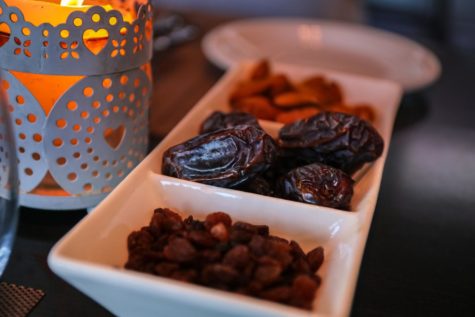
Hiba Nadeem, a freshman, commented on her favorite part about Eid: “wearing traditional clothing and getting money from relatives.” Nadeem added, “I get to see my family from all over the country. This is nice because I do not normally get see them.” Nadeem also commented on her favorite foods to eat during Eid: “I love eating biryani and halwa puri.” Biryani is a Pakistani dish with cooked meat and boiled rice that are cooked together. Halwa Puri is another traditional Pakistani dish. Halwa Puri is made separately; Puri is made with all-purpose flour and is rolled out and then kneaded by hand. They later flip it into hot oil in a wok. The Halwa should be made an hour after the Poori is made. Halwa’s main ingredients are flour, sugar, and ghee.
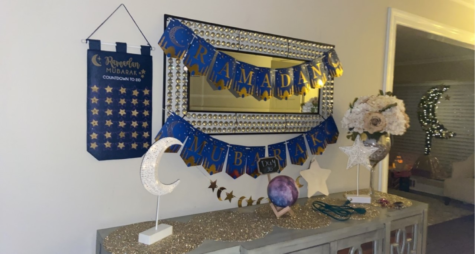
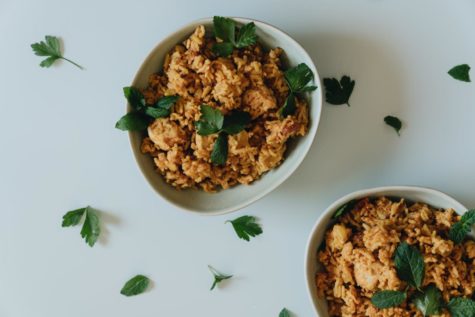
Freshman Nawar Aboud shared her thoughts on Eid: “I love when we get to visit friends and family.” Aboud added, “One of my favorite Eid traditions is getting henna done. Everyone gets beautiful designs.” As for her favorite foods, Aboud said, “Bastillas, are my favorite food on Eid.” Bastillas have a light, crumbly pastry shell that contains chicken and a spicy stuffing. Cinnamon and sugar are also added to add a sweet flavor to this savory dish. It is also known as a Moroccan pie.
Eid Al-Fitr is an important holiday to all Muslims. Depending on where one is from, traditions vary. But many traditions are similar, like getting henna and seeing friends and family. Eid is all about connecting with loved ones. The major difference clearly is the food.
















